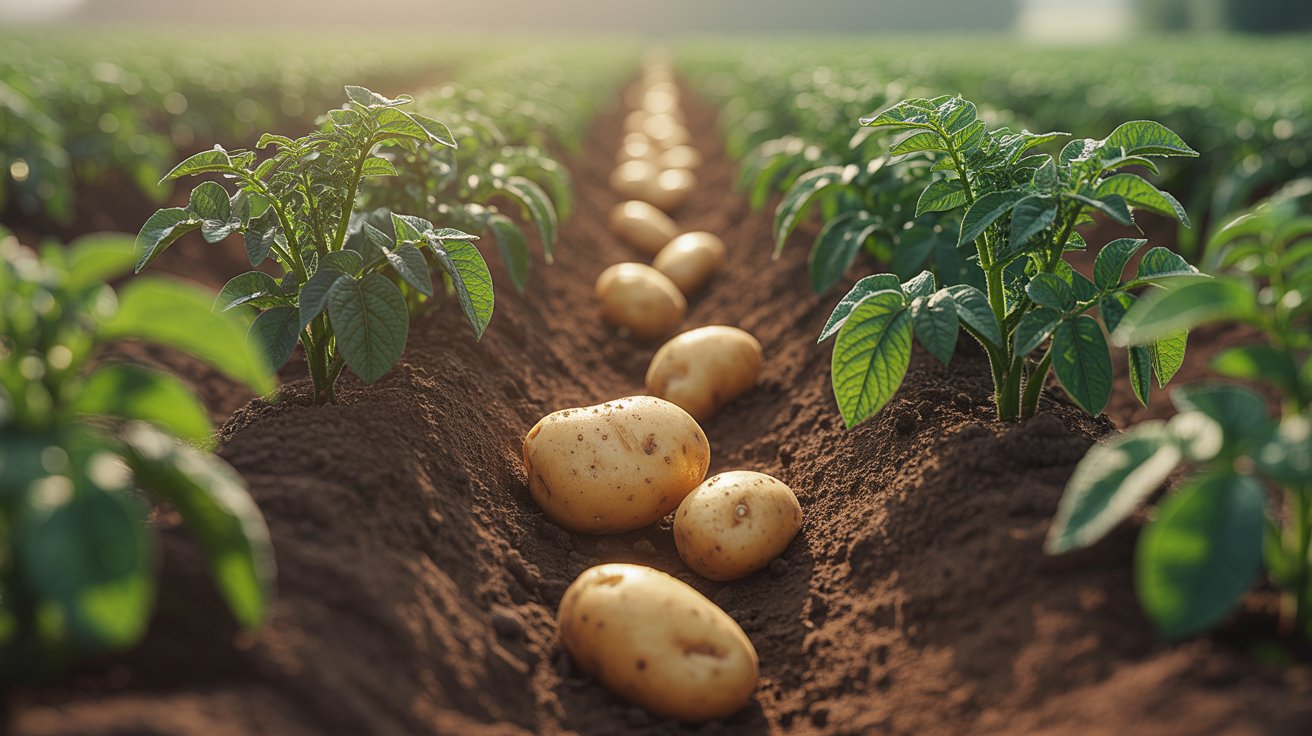
In potato farming, every input needs to deliver — and fulvic acid is one that pays off more than most.
You already know how much goes into producing a quality potato crop: preparing the soil, selecting seed, managing inputs, and monitoring every change in the weather. So, when something comes along that strengthens all that effort without adding complexity, it’s worth a closer look.
That’s where fulvic acid benefits come in. Fulvic acid works with your crop and soil system, enhancing efficiency and giving you more control over what ultimately ends up in the sack — and in your profits.
This guide breaks down why fulvic acid is becoming a go-to input for serious potato growers.
What Is Fulvic Acid and Why Does It Matter in Agriculture?
Fulvic acid isn’t usually the headline act in agriculture, but it plays a critical supporting role. It’s a natural organic compound formed from the decomposition of plant matter — part of a group known as humic substances.
What makes it exceptional is its extremely small molecular size, which allows it to transport nutrients directly into plant cells. That’s one of the most valuable fulvic acid benefits: it maximizes nutrient uptake without requiring large amounts of additional inputs.
Typically, fulvic acid contains:
- Trace minerals
- Amino acids
- Natural enzymes
- Organic acids
- Electrolytes
This unique composition is what makes it so effective in potato production.
Why Potatoes Respond Well to Fulvic Acid
Potatoes are a demanding crop. They require balanced nutrition, strong root development, and consistent soil conditions. Fulvic acid complements these needs perfectly, helping your existing inputs work harder while boosting plant performance.
Here are the key fulvic acid benefits for potato farming:
Improves Root Absorption of Nutrients
Fulvic acid increases root permeability, allowing tuber crops like potatoes to absorb nutrients more efficiently. Its strong chelating ability binds to micronutrients such as iron, zinc, and manganese, making them easier for roots to take up.
The result?
- Reduced fertilizer losses through runoff.
- More of your inputs doing the job they’re meant to do.
- Better return on every dollar spent on nutrition.
Efficient nutrient uptake is critical for potatoes, which depend heavily on underground feeding to produce healthy, marketable tubers.
Helps Potatoes Handle Stress
Heatwaves, droughts, or saline soils can all stress potato crops and reduce yields. Fulvic acid helps plants maintain cellular strength and water balance, enabling them to perform better under adverse conditions.
Field trials have shown that potatoes treated with fulvic acid suffer less wilting and maintain steadier growth during heat and moisture stress. This resilience means more consistent yields even when the weather isn’t cooperating.
Supports Soil Microbiology
Healthy soil equals healthy crops. Fulvic acid acts as a steady food source for beneficial microbes in the rhizosphere — the soil zone around the roots. These microbes:
- Break down nutrients into plant-available forms.
- Improve soil structure.
- Maintain a balanced root environment.
This creates a chain reaction: active microbes → stronger root zone → better tuber development.
Unlike chemical-only farming, which can disrupt soil biology, fulvic acid fosters the underground network that sustains crop health season after season.
Enhances Tuber Size, Shape, and Shelf Life
Consistent nutrient delivery and improved root health lead to tubers with more uniform size and shape — reducing defects and improving marketability.
In trials, growers using fulvic acid reported:
- Increased average tuber weight.
- Fewer deformities.
- Better skin quality and storability.
For growers supplying fresh markets or storage facilities, this means a higher percentage of premium-grade potatoes that maintain quality longer.
Fits Sustainable, Long-Term Farming
If you’re looking to reduce reliance on heavy chemical inputs without compromising yield, fulvic acid is a natural fit. It works in both organic and regenerative systems, improving soil health while still supporting high performance.
Long-term benefits include:
- Lower dependence on synthetic boosters.
- Healthier, more balanced soils.
- Improved nutrient cycling.
- Greater sustainability for future crops.
This is the kind of input that delivers now and protects your soil investment for the years ahead.
Application Guide for Potatoes
Application Stage | Method | Form | Dosage | Notes & Compatibility |
Pre-Planting (Soil Prep) | Soil drench or mixed with base fert. | Liquid / Powder | 1–2 L/acre (liquid) or 500 g/acre | Combine with compost or starter fertilizer for improved soil conditioning. |
Vegetative Stage (15–30 DAP) | Foliar spray | Liquid | 1–2 ml/L water | Can mix with micronutrients or seaweed extracts. Always jar-test before mixing. |
Tuber Bulking Stage | Foliar spray or drip irrigation | Liquid | 1 L/acre | Supports nutrient uptake during high demand. Avoid mixing with high-P fertilizers. |
Every 15–20 Days (Optional Boost) | Foliar spray | Liquid | 1–1.5 ml/L water | Apply early morning or late evening. Repeat up to 2–3 times if needed for crop health. |
Is Fulvic Acid Worth It for Potatoes?
By now, it’s clear that fulvic acid isn’t a passing trend — it’s a proven, practical tool for improving both yield and quality. It’s simple to use, works with your current program, and delivers measurable benefits to your potatoes and your soil.
At Fitochem, we supply high-quality fulvic acid products tested by farmers and trusted by agronomists. If you’re aiming for higher yields, better quality, and healthier soils — with less hassle — our fulvic acid solutions can help you get there.
Contact us today to learn more about integrating fulvic acid into your potato program and see the difference for yourself.

